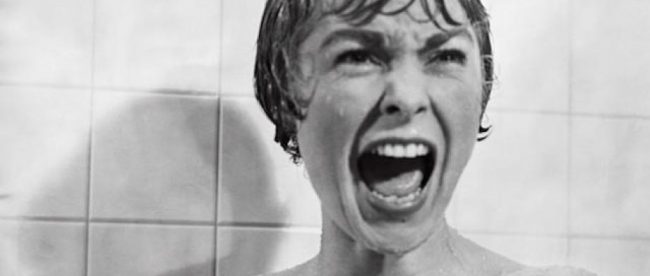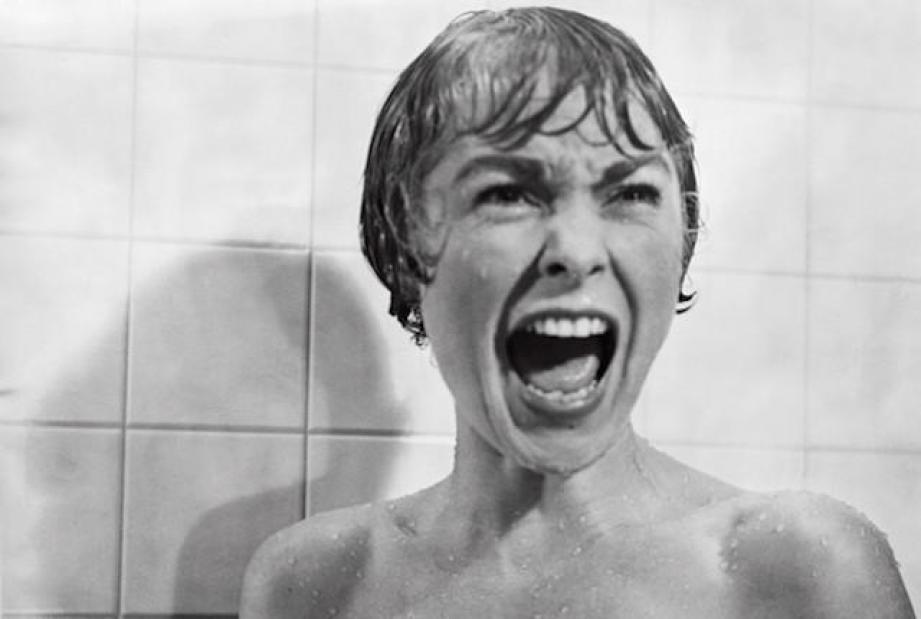How Hitchcock Kept Psycho a Secret


Alfred Hitchcock has a lot of incredible films to his credit, but few are as iconic as the 1960 thriller Psycho. The film scored big at the box office — it banked $50 million, which, accounting for inflation, is the equivalent of about $600 million today — and also received a lot of critical acclaim. Hitchcock received an Academy Award nomination for Best Director, and Janet Leigh, pictured above, earned a nomination in the Best Supporting Actress category.
The movie is based on a 1959 novel of the same name — and if you didn’t know that, you’re not alone. The book, when originally written, received a positive review by the New York Times but didn’t find much commercial success, and probably should have faded into oblivion. When author Robert Bloch shopped the script to movie studios, though, he found no takers; even Paramount, which ended up distributing the movie, passed. Psycho, the book, seemed destined to go nowhere.
But then something unusual happened. Hitchcock, having read the Times review and the novel itself, decided to acquire the rights to the book himself — something directors almost never did at the time. (That’s something studios typically do.) It cost him about $9,500 — about $80k in today’s dollars.
And yet, the book still didn’t become popular. That’s because Hitchcock didn’t want it to be. The story, Hitchcock theorized, relied on its surprise ending. (If you don’t know what happens, you really need to see the movie. Don’t worry, I won’t ruin it here.) Hitchcock was already a world-famous director; if the press were to get wind of his acquisition, they’d run out to buy the book and, well, that would ruin the surprise. The simple solution was to acquire the rights under a pseudonym, which is exactly what he did — not even Bloch knew who the buyer was. And when word got out that Hitchcock’s next film was going to be based on a book, he refused to identify which, just to be on the safe side.
For Hitchcock, that wasn’t enough.
Sooner or later, Hitchcock feared, someone would put two and two together and conclude, correctly, that Hitchcock was making the book Psycho into a movie. (In fact, before the movie hit theaters, some reporters came very close, articulating that the movie was to be called “Psyche.”) He needed to plan for that contingency. And his only solution? Make it really hard to read the book.
According to the 1990 book “Alfred Hitchcock and the Making of Psycho” — often considered the definitive history of the movie — Hitchcock made one more investment in Bloch’s novel. “Despite the consternation of some of his colleagues,” the book notes (excerpted here), “Hitchcock — to keep the surprises of Psycho as surprises — reportedly ordered [his longtime assistant] Peggy Robertson to buy up as many copies of the novel as possible from the publisher and from bookstores.”
The surprise unruined, Psycho reached the success Hitchcock had hoped; it regularly makes the list of the American Film Institute’s greatest movies of all time. The book, in part because of the popularity of the movie, did okay as well. It warranted two sequels — one which came out in 1982 after the film’s re-release, and one in 1990 — but neither were top sellers nor made into movies.
Bonus fact: Hitchcock’s desire to keep his plot a secret sparked an innovation in the movie-going experience, one that we take for granted today. As Variety reported, “in those days, moviegoers arrived at the theater whenever they wanted. If the movie was in progress, they would sit down and watch, then stick around for the next showing, to see what they’d missed.” But that wouldn’t work for Psycho — you may end up seeing the plot twist before you even see the murder. Hitchcock broke from the norms of the day, insisting that no one enter once the movie began. Variety noted that this “became a marketing hook — and eventually became standard behavior for moviegoers. ”
From the Archives: Seeing Red in the Hen House: The main story is about chickens. The bonus item is about Psycho.
